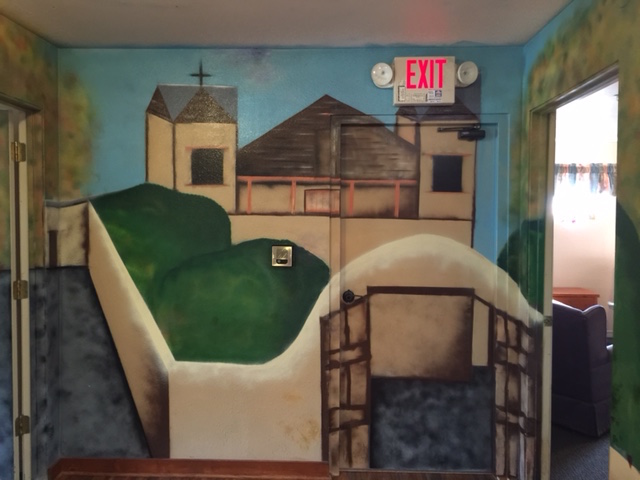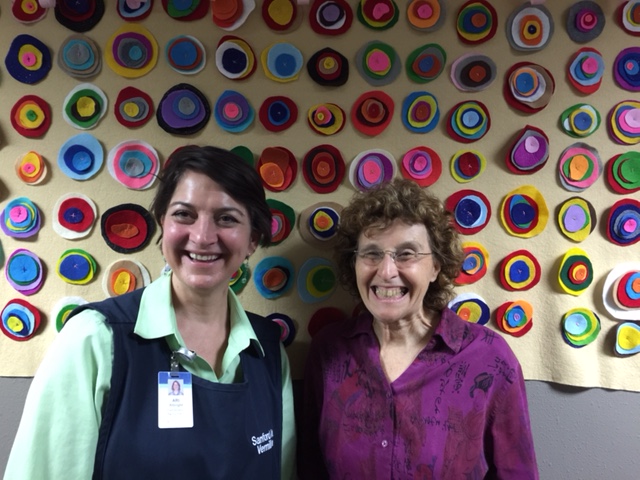Archive for June 2015
The Ringing of Freedom
When I was growing up, in the 1950s, the Fourth of July was a true day of freedom. We had a huge family picnic at our relative’s house. The festivities included a swimming pool and was held in a neighborhood without fences, which meant we kids could run breathlessly through the yards, chasing each other, playing tag, baseball and hide ‘n seek.
But first, we politely greeted our relatives. Then our aunt said, “How about a drink?” to my parents. And “Kids, there’s sodas in the cooler.” Dad wanted Scotch on the rocks and Mom asked for gin and vermouth. Mom joined the women who were arranging the food on long picnic tables and Dad hung out with the men, who were grilling burgers and dogs.
That’s when the freedom began. My younger brother Dan and I, normally allowed to drink only juice and milk, eagerly surveyed the array of icy sodas and we both chose Grape Nehi.
Quickly we were swept into a game of tag. Some of the kids were already wet from swimming and others still wore shorts. Underneath our clothes, Dan and I had on our bathing suits and were ready to leap into the pool and get immersed in a game of Marco Polo.
The adults were busy with drinks and conversations and no one admonished us to be quieter, slower, or more polite. We were a band of glowing energy, sweating with the joy of freedom and racing to escape being IT. We were a burst of independence, throwing off our shorts and t-shirts and cannonballing into the pool, shrieking, splashing, and laughing.
After several hours, the women beckoned us over. We dropped onto the lawn and ate ravenously off drooping white paper plates loaded with baked beans, hot dogs, corn, cole slaw, and potato chips. Then we spit watermelon seeds at each other. Finally, we sated ourselves with rich chocolate cake.
By then, the fireflies flickered and glowed. My uncle handed out sparklers without even warning us to be careful. Those dangerous sulphury sparks thrilled us. We raced about, a sparkler in each hand, writing our names on the sky, streaking across the dewy grass, leaving a trail of smoldering light behind us.
At the end of the evening, my uncle set up the fireworks. We sat on blankets, this time with our families. We were smudged, sweaty, and stained with watermelon juice and dirt. I leaned against Mom and my brother snuggled next to Dad. As the fireworks spurted up into the sky, we pressed our hands against our ears, the noise and brilliant layers of light bursting around us.
“God bless America,” my father said.
“America,” the adults echoed, their voices hushed and reverent.
Only later, when I was older, did I realize the significance of the holiday: my relatives were all first generation Americans—and on that day, among others, they were grateful their parents had escaped the tyranny and religious persecution of Poland, Russia, and Hungary and had come to this welcoming land.
But that night, I was simply worn out from my own childlike version of independence. Dan and I leaned against our parents, fighting our tiredness, and let the sounds of freedom ring us to sleep.
Deborah Shouse is the author of Love in the Land of Dementia: Finding Hope in the Caregiver’s Journey.
Bringing Eden Home: Experiencing A Comforting Concept in Elder Care
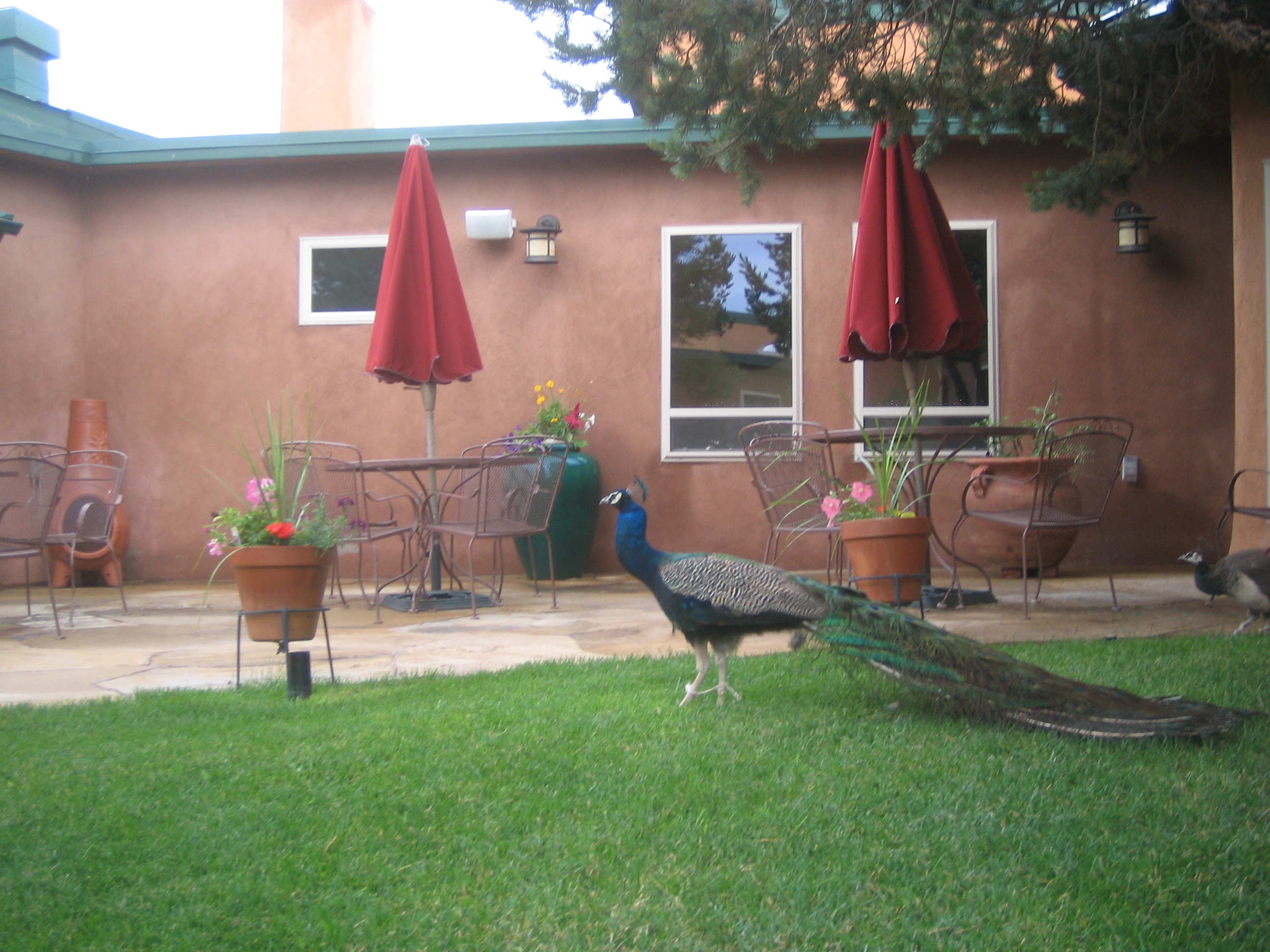 First, we hear a rooster crowing. Then Ron and I see a few goats and some chickens, nibbling happily in an outdoor enclosure. Their neighbors are a preening peacock and his mate, who’s proudly fanning her tail feathers. These animals are our initial introduction to Sierra Vista Retirement Community in Santa Fe, NM, a dementia care facility and an Eden Alternative Care Community.
First, we hear a rooster crowing. Then Ron and I see a few goats and some chickens, nibbling happily in an outdoor enclosure. Their neighbors are a preening peacock and his mate, who’s proudly fanning her tail feathers. These animals are our initial introduction to Sierra Vista Retirement Community in Santa Fe, NM, a dementia care facility and an Eden Alternative Care Community.
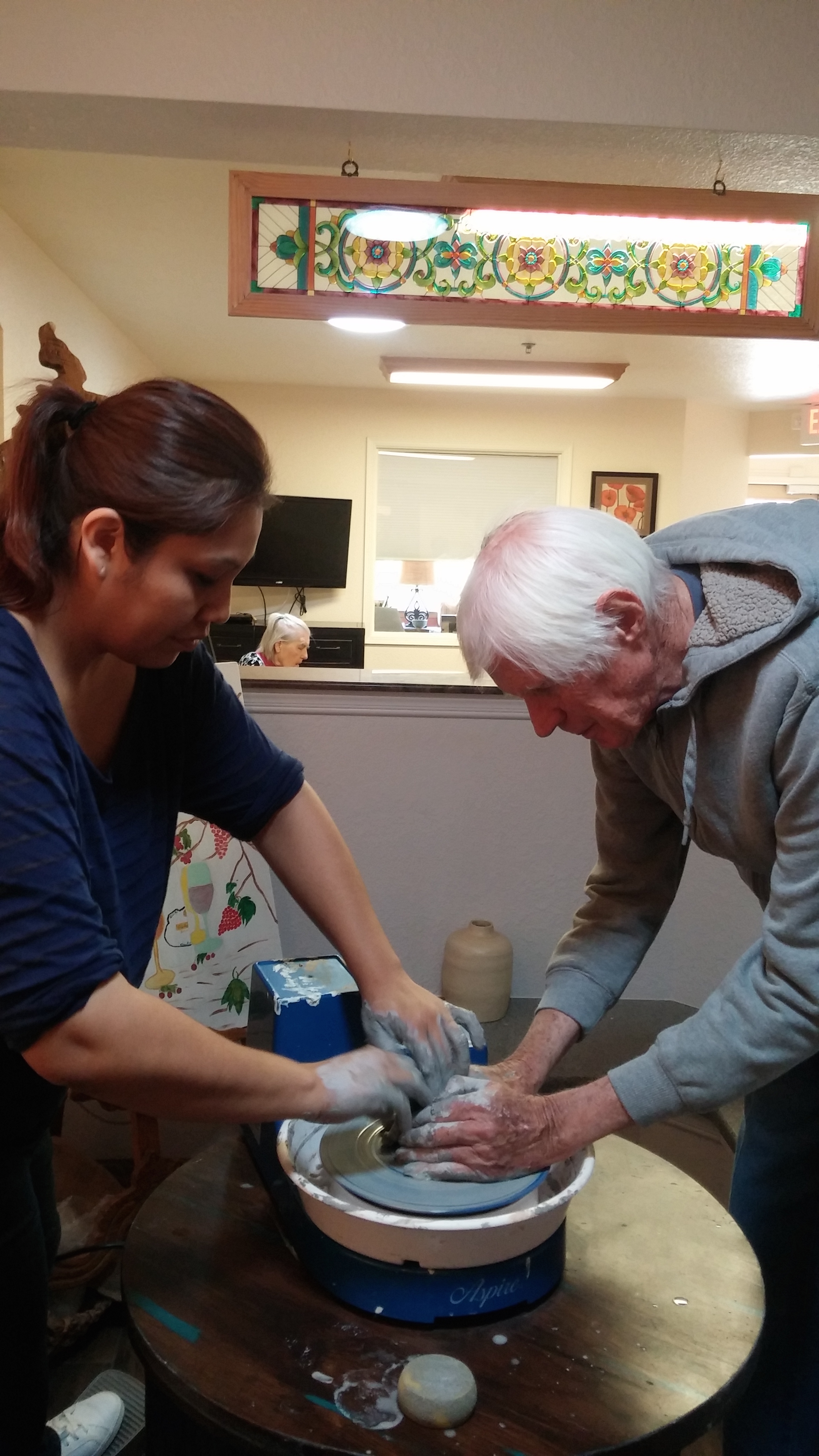 Dr. Bill Thomas founded the Eden concept, and we were intrigued by his philosophy: no matter how old we are, life is about continuing to grow. Care is collaborative, a balance of giving and receiving. Together, care partner teams strive to enhance well-being by eliminating the three plagues of loneliness, helplessness, and boredom. The Elder-centered community revolves around close and continuing contact with plants, animals, and children, believing these relationships provide young and old alike a life worth living.
Dr. Bill Thomas founded the Eden concept, and we were intrigued by his philosophy: no matter how old we are, life is about continuing to grow. Care is collaborative, a balance of giving and receiving. Together, care partner teams strive to enhance well-being by eliminating the three plagues of loneliness, helplessness, and boredom. The Elder-centered community revolves around close and continuing contact with plants, animals, and children, believing these relationships provide young and old alike a life worth living.
Ruth Dennis, Social Services Director of Sierra Vista, welcomes us and shows us into the home. We are greeted by wooden floors, an upright piano, the sweet tweet of birdsong, and a smiling elder. Colorful artwork, created by the elders, crowns every hallway, adding a vibrancy and energy.
I try to imagine what it would have been like to visit my mom in such a home-like facility and I am so emotionally moved by the idea of being together in this comforting home that I burst into tears. Fortunately, Ruth understands and envelops me in a big hug.
Opening the Door and Opening the Heart
 As we stroll through the spacious home, Ruth shows us the nursing office, which features a Dutch door, so elders can see what’s going on. The nurse, Shauna, welcomes their interest and occasional assistance.
As we stroll through the spacious home, Ruth shows us the nursing office, which features a Dutch door, so elders can see what’s going on. The nurse, Shauna, welcomes their interest and occasional assistance.
The laundry room also has half-doors.
“Elders are welcome to get involved with folding clothes. They help with the house as often as possible” Ruth says.
The spacious open kitchen, with a friendly chef/ Care partner chopping yellow and red peppers, lets residents see and smell the food. All staff takes turns with cooking, and elders often help.
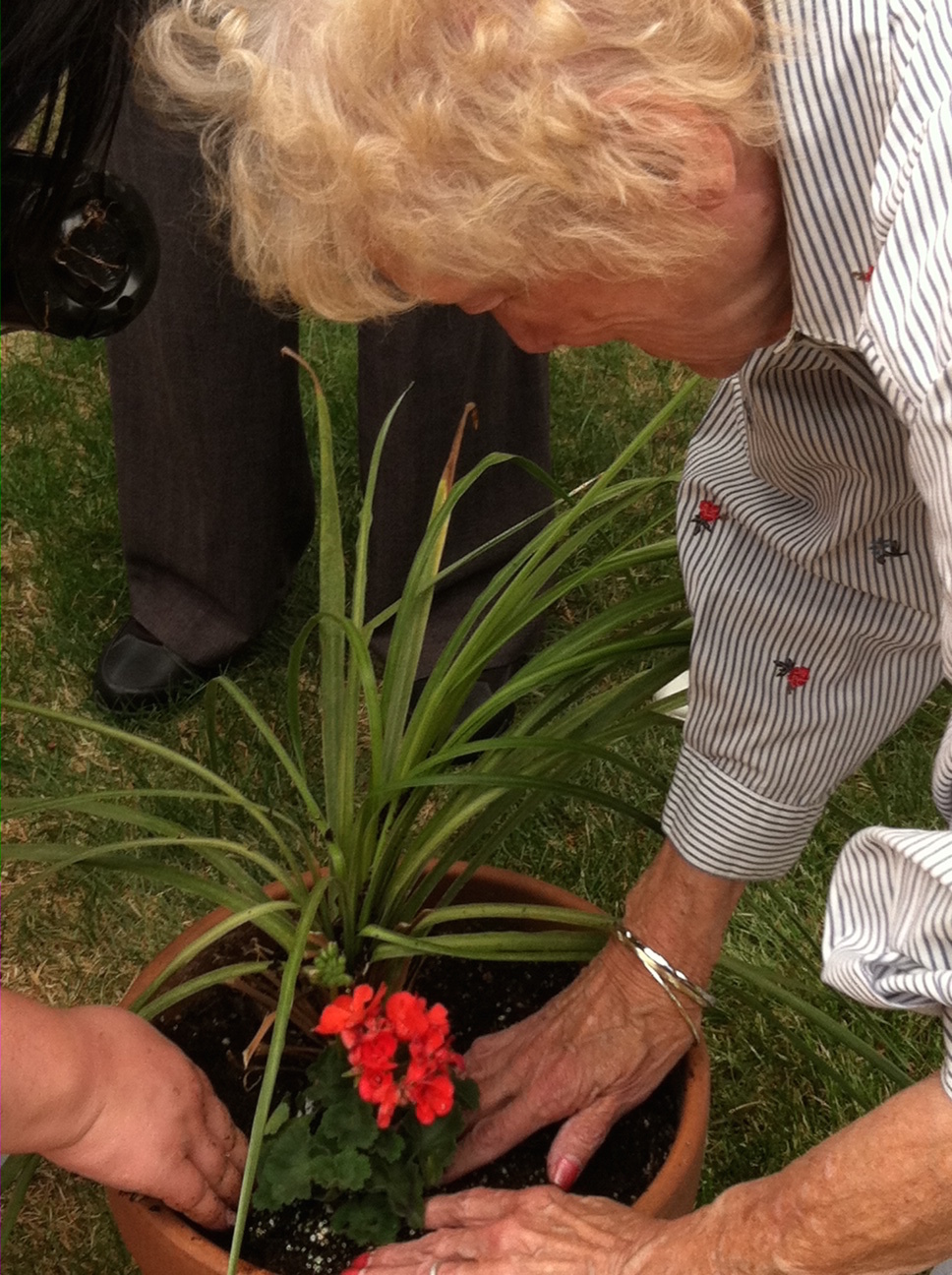 “Soon, it will be warm enough to start our vegetable and flower gardens,” Ruth says, leading us into a lovely courtyard. Residents can wander into the outdoor area whenever they wish. This becomes the summertime living room.
“Soon, it will be warm enough to start our vegetable and flower gardens,” Ruth says, leading us into a lovely courtyard. Residents can wander into the outdoor area whenever they wish. This becomes the summertime living room.
 Towards the front of the building, in the living room, picture windows allow a grand view of the goats and chickens as well as the beautiful New Mexico Mountains. Elders can watch the animals’ antics and the change of seasons from the comfort of easy chairs and sofas.
Towards the front of the building, in the living room, picture windows allow a grand view of the goats and chickens as well as the beautiful New Mexico Mountains. Elders can watch the animals’ antics and the change of seasons from the comfort of easy chairs and sofas.
Inviting Choices and Connections
Creativity and choice are key in this environment. Ruth describes a flow of interesting activities, telling us, “We offer options, so elders can gravitate towards the project that most interests them.”
Ron and I have spent a fair amount of time in memory care facilities and we have been very grateful for the care and community our beloved parents received there. But this Eden home has a different feel and look. Where are the shining linoleum floors, the stark white hallways, the cluster of slumbering elders in wheelchairs, the stark nursing station? Where is the cheerful game of Bingo and the large screen TV blaring The Price is Right? Elders here are given another set of alternatives that that is focused on the simple pleasures of life; beautiful art, loving pets, music and an opportunity to help others.
“We try to control the television; we don’t want TV to replace life” Ruth says, as we savor their big screen, which features the soothing movements of dolphins leaping through brilliant blue ocean water to the background of classical music.
“Our elders are encouraged to stay involved with life, to be connected with the pleasures and joys of living,” she says. “Life is embraced through having a constant connection to animal companions, art, music and loving relationships.”
For more about the Eden Alternative concepts and care facilities, please visit www.edenalt.org/about-the-eden-alternative/
Deborah Shouse is the author of Love in the Land of Dementia: Finding Hope in the Caregiver’s Journey.
Passing Down the Punchline: A Father’s Day Retrospective
This blog is a tribute to my father, an honoring of my amazing brother, and a chance to share one of my dad’s favorite jokes. I welcome your favorite jokes and I wish you a lovely day of celebrating good fathers. Warmly, Deborah
THE JOKES ON HIM
It’s the fifties. My brother Dan and I sit opposite each other at the Formica kitchen table; my mother and father sit on each end.. We are eating Swiss steak, mashed potatoes and mushy-looking peas. My father is telling us about this sales call he had today. As he begins the story, Dan and I listen carefully. We want to see who can be the first to figure out if it’s regular boring adult conversation or a joke.
“So the man says to me,” my father says.
I screw up my mouth and nod at Dan. He nods back. It’s definitely a joke.
Some fathers like to train their kids by tossing them balls, wanting them to hone their catching and pitching skills. Dad tossed us one liners and puns, watching to see how quickly we caught on.
“My brother called the other day,” Dad would say and we all believed that Uncle Lou really had called until we were socked in the stomach with the punch line.
As we got older, Dan and I learned to keep our faces deadpan, to give my father no hope, no clue that we knew he was trying to be funny. We learned to sit still for several seconds after we had been surprised by a punch line and then, dissolve into spirited laughter if it was really funny or loud groaning if it was really terrible.
Despite all this exposure to fabulous stories, great deliveries and rollicking punch lines, neither my brother nor I are joke tellers. I like to throw spontaneous one liners into conversation, but cannot remember a long involved story. My brother has always been laid back, offering at most an occasional bon mot.
Fast forward to the nineties. We’re at a family reunion and it’s raining for the third day in a row. Twenty of us are crammed into my parents’ motel room eating a picnic lunch off drooping paper plates. My nephews squirm around, playing with various plastic weapons; my daughters and my niece sprawl languidly on one of the queen-size beds. Mom and I and a couple cousins camp on the other bed. Dan sits in a chair, reading a Richard Ford novel. My father paces in front of the television.
The noise in the room builds and my father stands still, then smoothes his shirt. I can tell from his posture that he is going to tell us a joke. My father does not silence the room. He does not have to. Dan and I are always alert for the first sign of our highest role: audience. Dan looks over at his two sons and cocks an eyebrow. I look at my daughters and nod once. They instantly quiet.
“This rain reminds me of the time I took my dog to the movies,” my father says.
Dan and I grin at each other. There is no dog in the history of our family.
“This dog was smart and loved for me to sneak him into the movies.” My father’s voice is so smooth and lulling, I almost believe this dog was part of our household. “One day I got caught and the manager made me promise to never bring that dog to the movies again. But one rainy night, I couldn’t resist.” He looks to Mom for confirmation and good sport that she is, she smiles back. “I sneak the dog into the movies. As we are leaving the theater the manager pushes his way up to me, pulls aside my jacket where the dog is hiding, and says in an accusatory voice, ‘So, how did your dog like the movie?’
‘ Oh pretty well,’ I answer. ‘But he liked the book better’.”
For a moment, the room is still. Then my nephew slaps his thigh and we all dissolve into laughter.
“And since we’re talking about dogs,” Dad says, taking his rightful place in center stage, between the television and the dresser. “Our next door neighbor has the most obnoxious dog.”
The jokes continue, each grander than the next.
Right after the one about the woman and the dry cleaners, my brother suddenly says, “I had this experience with my shoes the other day.” His voice is calm and plain. I smile, figuring the joke telling is over and we are moving into general conversation. Then I listen more carefully.
Dan tells a long and complex story– decidedly a bold mood in this charged atmosphere. My father has a patient expression on his face. My brother is articulate and calm, no histrionics, no mugging for the crowd. He may simply be telling an interesting story. I pray, “If he’s telling a joke, let him tell it well.” Dan stumbles over a word and I wring my hands. I feel like I am watching a tennis player’s first time on the court in an intense competition. I want my brother to win.
And then, Dan delivers the punch line. It’s smooth and elegant; sliding into us so unexpectedly, so easily that even Dad is caught off guard. Even Dad has that moment of hesitation and that flash of realization before he bursts into laughter and applause.
The applause dies down and my father segues right in. Dan folds his hands, content. I smile at him. I have read different accounts of coming of age. Yet here is one I have never seen before. My brother, emerging from years of quietly being in the audience, elegantly seizing the stage and then graciously giving it back. He has been heard. He has let us know, he is his father’s son.
“It’s stopped raining,” one of the boys says. “Let’s go out and play.” With a great roar, the boys take their swords and rush out to the nearby playground. The girls gather their purses and go to the quick shop for a diet drink. The cousins go off to do some shopping.
The room is quiet now, just my dad, my brother, my mom and I.
“I had no idea that you were such a great storyteller,” Dad says to my brother.
My brother shrugs. “After a while,” he says, “you catch on.”
Deborah Shouse is the author of Love in the Land of Dementia: Finding Hope in the Caregiver’s Journey.
Four Riveting Reasons to Wield the Mighty Pen
Psychologist Don Wendorf wrote Caregiver Carols: an Emotional, Musical Memoir to help other caregivers cope with their feelings and to help himself. Writing was cathartic for Don and it offered him insight and understanding into his caregiving journey. Don says, “I always encouraged my therapy clients to keep a journal and I have now experienced for myself just how helpful this is. The whole endeavor of creating something is very life-giving and essential.” Here are a few tips for caregivers from Don:
Nurture Yourself
Take care of yourself the best you possibly can. Do as much as you can that nurtures your body, soul and mind. Exercise like a fiend. Go out with friends. Do creative stuff. Feed your faith. Avoid burnout at all costs. Seek out, accept and ask for even more help than you think you need or want.
Reach Out for Feedback and Support
Rely on people you trust to give you feedback about how you’re doing and if you’re looking burned out. They may be able to see what you can’t or won’t. Talk to other caregivers who know this path and use local or online support groups. Express your feelings to others and let them support and comfort and care for you. Man, it feels good.
Jilt Perfectionism
Let go of perfection and forgive yourself and your caregivee when you goof up, which you ARE going to do.
Explore and Express Your Emotions
Look beneath your anger and see what layers of emotion it may be covering up: anxiety, ambivalence, fear, sadness, resentment, helplessness, hopelessness, depression, remorse, guilt, regret, loneliness, neediness. I think the biggest for me was GRIEF: I was slowly losing the love of my life. Express your feelings. There is absolutely nothing unmanly about it and you are then less likely to use anger as a blanket emotion. So, Caregiver Guys: Man Up!
Deborah Shouse is the author of Love in the Land of Dementia: Finding Hope in the Caregiver’s Journey.
Two Secrets to Creating a Thriving Dementia Care Community: Arts and Collaboration
“Art is the vehicle for creating connection and community,” Ari Albright said, as we toured her eclectic art studio/teaching space in Vermillion, South Dakota. Ari serves as Program Coordinator and Artist-in-Residence for Sanford Arts Vermillion (SAV), located at Sanford Vermillion Medical Center. We’d read about her innovative approach to arts and dementia and we wanted to learn more. During our visit, we witnessed much more than an arts program. From the executive team to the nursing team to the dietary staff, we experienced a powerful spirit of collaboration and a dedication to enriching the residents’ lives through the arts. This sense of purpose permeated Sanford Vermillion Medical Center, which contains a hospital, clinic, independent living center, and a long term care facility, complete with a special care dementia unit.
After our tour of her studio, Ari led us over to the facility’s boardroom, where we met Mary Merrigan from Public Relations, Cindy Benzel from Human Resources, and Jill Christopherson, Executive Assistant.
“Ari was brought in to enrich activities in the long term care center,” Mary told us. “Our staff completely embraced the program: it made their work less rote and more meaningful.”
Tim Tracy, CEO, dropped in to greet us. “We’re very proud of the program and of Ari,” he said. “It’s made a big difference in the lives of our residents and of our staff.”
Setting Goals and Exceeding Expectations
Since 2011, Ari has facilitated arts engagement in healthcare environments. She started doing art projects with the patients, staff, and families at the Sanford Cancer Center and Children’s Castle of Care Hospital in Sioux Falls, South Dakota. In 2012 when Ari approached Tim and his team about bringing her participatory program to Sanford Vermillion, they were interested. Tim, along with Ari and members of the executive and care teams, set three goals for the art program:
- Enrich activities for residents with dementia and special needs adults
- Uplift the environment by offering art displays on the center’s walls
- Care for caregivers by taking the redundancy out of the staff’s daily job
Ari’s program, which consisted of three to four weekly two-hour art programs that supplemented the on-going activities agenda, worked beyond their expectations. Ari trained members of the care team to become involved in art activities, both when she was there and when residents needed something soothing or meaningful to do. She worked with volunteers and family members. She created “Art Kits,” a rainbow-colored box with an easy project that a resident could do on her own.
The residents participated in every aspect of this multi-faceted textile art project, which now hangs in the special care unit. This was inspired by Wassily Kandinsky’s Color Studies.
In 2012, 30 percent of the facility’s 62 residents were taking psychotropic medications. (The national norm is between 25-30%). By the end of 2013, when the arts program had been in place for one year, only 20 percent of the 65 residents were taking the medications. Ten residents had a reduction in medications and seven simply no longer needed the drugs. In October of 2014, after two years of the arts program, only three percent were taking psychotropic medications. Reducing these strong medications enriched the residents’ quality of life in a variety of ways, including making them less susceptible to falls, increasing their alertness, and piquing their appetites. Ari’s media included painting, sand, clay, fabric, and origami. Along with the tactile and visual experiences, she wove in literary arts, music, and movement. These projects increased residents’ creative thinking, decision-making, playfulness, cooperation, conversations, patience, and sense of meaning. The families were often astonished by the creations and contributions of their loved ones. The staff felt a greater connection with the residents and an increased sense of empowerment.
“The artistic tools are only a catalyst for connection,” Ari says. “This program is about the process of doing something that feels relevant.”
 This literary arts project inspired important memories. This was facilitated by visiting SDAC Artist and writer, B.J. Buckley.
This literary arts project inspired important memories. This was facilitated by visiting SDAC Artist and writer, B.J. Buckley.
It Takes a Team To Say Yes! To Art and No to Psycho-tropic Drugs
A collaborative team of executives, management, and staff worked together to implement and integrate this arts program. Each one played an important role. The executive team paved the way, finding funding, navigating the system, and offering vital goal setting and guidance. Nursing professionals and social workers educated doctors, family, and staff on the program’s benefits and created time for staff to participate. The dietary department displayed residents’ artwork on the cafeteria walls and now hosts quarterly artists’ reception.
This is part of the team from Sanford Vermillion Medical Center that improved residents’ lives by embracing participatory arts programs in their senior living and special care communities. Back row: Kay Hoesing, MDS Coordinator; Gayle Matzke, DON; Jeff Berens, CNO; Rebecca Froehlich, SAV Intern/Volunteer; Ron Zoglin; Front row: Jill Christopherson, Executive Assistant; Melissa Langle-Lee, Social Work; Deborah Shouse; Ariadne (Ari) Albright, Program Coordinator and Artist in Residence
For more information about Ari, visit
www.arialbright.com
Facebook page: Art with Ari
For more information about the Sanford Vermillion arts program, visit:
Sanford Arts Vermillion 20 E. Plum Street, Vermillion, SD 57069
Email: Ariadne.Albright@Sanfordhealth.org
Phone: 605-638-8580
www.sanfordvermillion.org
Do you have a story about collaboration, arts and dementia? If so, I’d love to hear it!
Deborah Shouse is the author of Love in the Land of Dementia: Finding Hope in the Caregiver’s Journey.

